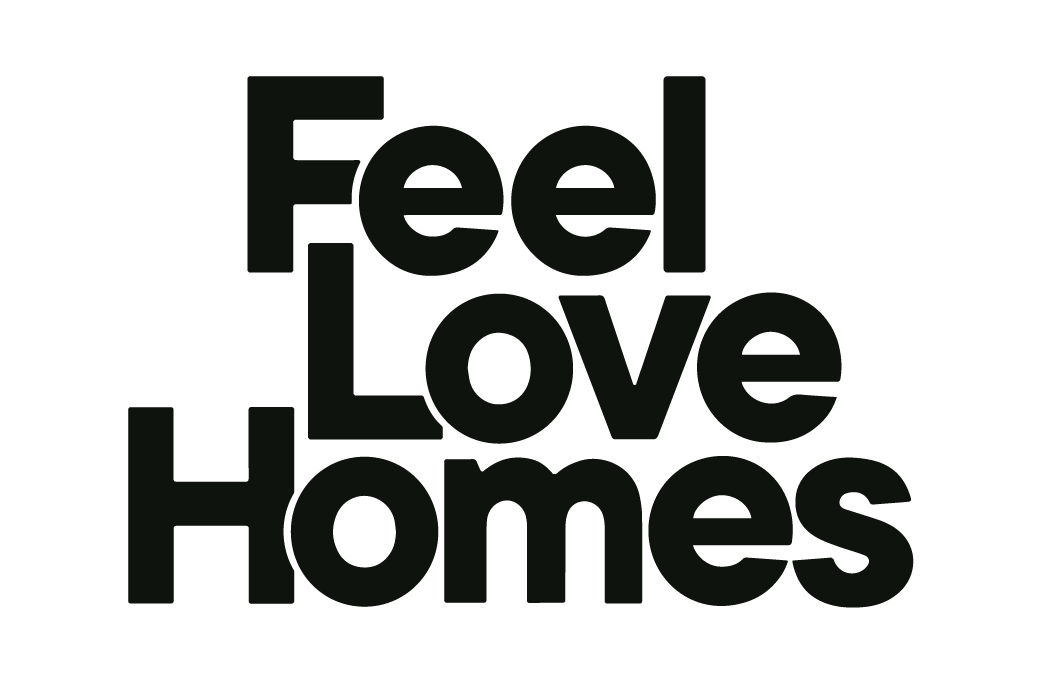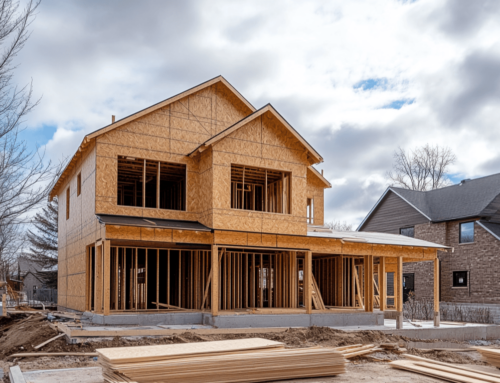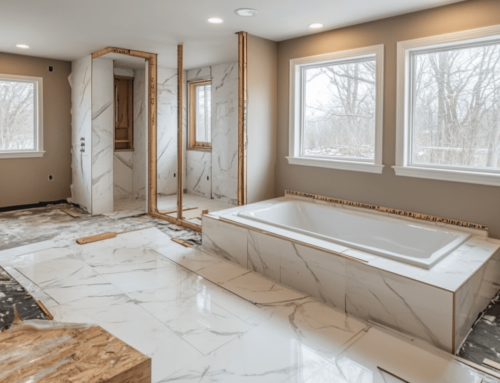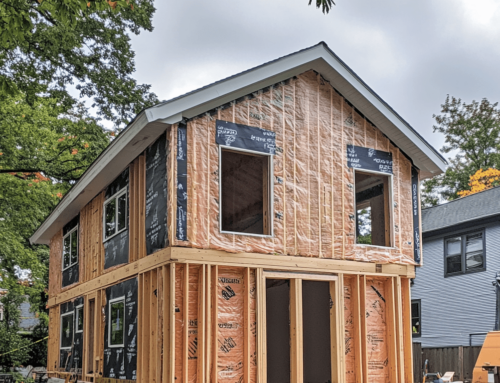Home improvement projects can make your home more enjoyable to use and allow you to put your personal touch on the property. Generally speaking, they offer a strong return on investment, too.
These days, homeowners have quite a few options when it comes to paying for renovation projects. In this article, we go over the most popular options, along with their advantages and disadvantages. You’ll also find a list of dos and don’ts to help you avoid mistakes in the home renovation financing process.
Ways To Pay for Your Home Improvement Project
There are a lot of ways you can pay for a home renovation project. Some options work better for some homeowners than others. The best option for you will depend on several factors that include the status of your mortgage, financial profile, and your personal preferences.
Cash
The simplest option is to pay for your project with funds you already have. Doing so means not having to go through a loan process and not having to pay interest on money you borrowed.
However, this option may not be available to everyone — especially for larger renovation projects. Even if you do have the money available, you may not want to deplete your liquid funds for an investment that you won’t get a return on right away.
Pros
- No interest cost
- No loan application process
- Doesn’t hurt your credit
Cons
- You may need the funds for an emergency
- Not an option for many homeowners
- Other types of loans typically have higher interest rates
Ideal For
Paying cash for home renovations may be the right choice for homeowners who:
- Have significant cash reserves
- Want to undertake small, inexpensive renovation projects
- Don’t want to deal with the loan process
Home Equity Line of Credit (HELOC)
HELOC loans are an increasingly popular option for funding home improvement projects. These loans allow you to borrow money against the equity you have in your home — or, the difference between what your home is worth and how much you owe on your mortgage.
Unlike some other options, you don’t borrow a set amount of money with a HELOC. Instead, it is treated as a line of credit similar to a credit card that you can borrow from as needed. These loans come with a withdrawal period where you can access that line of credit, followed by a repayment period where you repay only the funds you borrowed.
HELOCs are a flexible loan option, with few (if any) restrictions on how you use the funds. Borrowers are also exempt from having to make payments during the draw period, which can be useful while spending money on a home improvement job. They do, however, tend to have higher interest rates than some other types of home renovation financing.
Pros
- Easy to provide collateral
- Funds can be used for just about anything
- No payments required during the draw period
Cons
- Only an option if you have enough equity to cover the amount of the loan
- May have higher credit requirements than other loan types
- Creates additional risk of foreclosure if you fail to repay
Ideal For
A HELOC might be the right option for people who:
- Have more equity in their home than the cost of their renovation plans
- Don’t have a specific amount of money they need to borrow yet
- Can benefit from a period without having to make payments on the loan
Personal Loan
Banks and credit unions offer personal loans for a variety of purposes, one of them being for home improvement projects. Unlike HELOCs, they typically aren’t backed by any kind of collateral. Instead, they are administered based only on your creditworthiness.
The requirements and restrictions on personal loans can vary greatly from one financial institution to the next. Some lenders require you to clearly state the purpose of your loan and may penalize you for using the funds in a way other than you indicated. Because they aren’t backed by collateral, you may face high interest rates depending on your credit profile.
Pros
- Doesn’t put your home or other personal property at risk of repossession
- Many options for lenders available
- Doesn’t require home equity
Cons
- May come with high interest rates
- Loan repayments begin immediately
- Can come with restrictions to navigate
Ideal For
You may want to consider a personal loan to finance your home improvement project if you:
- Have good credit and steady income
- Have clear plans and a set budget for your renovation project
- Don’t have equity to draw from
FHA Title 1 Loan
The U.S. Department of Housing and Urban Development (HUD) manages a Federal Housing Authority (FHA) loan program for homeowners looking to make critical improvements to their property. They are backed by the government but issued through private lenders. These loans typically come with much lower interest rates than many other options. In addition, you don’t need to provide collateral for loans up to $7,500.
FHA Title 1 loans do, however, come with significant restrictions. Because they are specifically intended to help homeowners make improvements, not all projects are eligible for loans through the program. You can only use an FHA Title 1 loan to pay for projects that make your home “more livable and useful.” You can’t use them for cosmetic upgrades or luxury features like swimming pools.
Pros
- Low interest rates
- No collateral required for loans up to $7,500
- Can be used to cover additional costs like surveying, architectural consultation, permitting, and more
Cons
- Can only be used for limited types of home improvement projects
- Borrowers must submit specific plans, subject to approval
- Requires private mortgage insurance at $1 per $100 borrowed annually
Ideal For
An FHA Title 1 loan can be a strong option for homeowners who:
- Want to make basic functional upgrades
- Need to add accessibility features like wheelchair ramps to their home
- Have trouble getting financing from other sources

Cash-Out Refinance
Another option available to homeowners is what’s known as a cash-out refinance. This is when a borrower refinances their mortgage and withdraws some of the equity they have in the form of cash. The money you take out from a cash-out refinance is yours to spend and not a loan in the direct sense. Therefore, there are no restrictions on how you spend that money.
When you take out cash from refinancing your mortgage, however, you lose equity in your home. This can result in higher payments than you’d have if you hadn’t touched your equity. While the money you withdraw is not a loan, you are essentially borrowing money from yourself at the same interest rate as you’re paying on your mortgage.
Pros
- No restrictions on how you spend your money
- No repayment needed
- Mortgage interest rates are often lower than most other types of loans
Cons
- Reduces your equity, which can impact your credit profile
- Increases the amount you need to pay back on your mortgage
- Refinancing comes with closing costs and other fees
Ideal For
A cash-out refinance is worth looking into if you:
- Have significant equity in your home
- Can get lower interest rates than you have on your current mortgage
- Want to be able to spend the money without restrictions
Credit Cards
You can also use a credit card or multiple cards to pay for home improvement projects. Credit cards typically don’t have restrictions on how you can use your credit line. With a credit card, you can spend only the amount you need to instead of borrowing a set amount.
As anyone with a credit card knows, interest rates on credit cards is almost always significantly higher than other types of borrowing. In many cases, your interest rate on a credit card can be double or even triple what you’d pay for a personal loan or HELOC, for example. For bigger projects, that can result in enormous amounts of interest building up.
Pros
- No restrictions on what you use funds for
- No application process and immediate availability if you already have a card
- Some cards have low or zero-interest introductory periods
Cons
- Usually come with very high interest rates
- Funds dependant on your credit limit
- Can quickly result in unmanageable debt
Ideal For
Using a credit card to pay for your home improvement project may make sense if you:
- Want to pay for a small, inexpensive project
- Can repay the loan quickly
- Are disciplined with using credit
You’ve Got Home Renovation Financing Options
What’s the best financing option for your home improvement project? The answer is, it depends.
As you can see, there are distinct advantages and disadvantages to each type of financing. Your ability to access these options also depends on your financial profile, including your credit score, debt-to-income ratio, home equity, and more.
It’s worth your time to get a complete picture of your finances and research your options for yourself. However, it is always a good idea to talk to a professional for help finding the best home improvement financing option for you. Many credit unions and some banks offer free or low-cost advisory services. Working with a professional can help you avoid mistakes that could end up being extremely costly.





